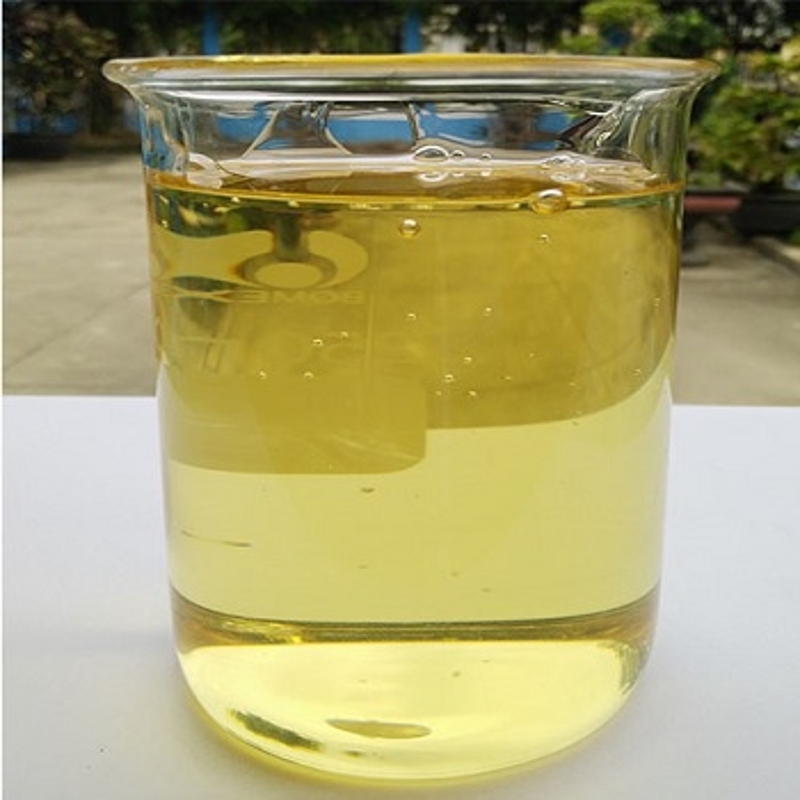-
Categories
-
Pharmaceutical Intermediates
-
Active Pharmaceutical Ingredients
-
Food Additives
- Industrial Coatings
- Agrochemicals
- Dyes and Pigments
- Surfactant
- Flavors and Fragrances
- Chemical Reagents
- Catalyst and Auxiliary
- Natural Products
- Inorganic Chemistry
-
Organic Chemistry
-
Biochemical Engineering
- Analytical Chemistry
- Cosmetic Ingredient
-
Pharmaceutical Intermediates
Promotion
ECHEMI Mall
Wholesale
Weekly Price
Exhibition
News
-
Trade Service
Recently, the first phase of the "Academic Salon" of the China Electric Vehicle 100 People Association with the theme of the application and industrialization of fuel cell technology in China was held
.
The salon reached a preliminary strategic consensus: hydrogen fuel cell vehicle technology is in the transition period from pure research and development to commercialization, and the future road is long
.
Experts said that from the perspective of international advanced level, hydrogen fuel cell vehicles have entered the commercial induction period
.
Five years later, hydrogen fuel cell vehicles may open the road
to commercialization.
For China, as long as the relevant policies are in place and seize the "window period" of the next 5 years, China's hydrogen fuel cell vehicles, including buses and cars, will have obvious breakthroughs, and will enter a large number of promotion stages
around 2020.
It is understood that hydrogen fuel cell vehicles use the principle completely opposite to electrolysis, and drive the engine to drive the engine through the electricity generated by the chemical reaction of hydrogen and oxygen in the air, thereby driving the car
.
At the same time, the energy density of hydrogen is 10 times that of on-board lithium-ion batteries, and a single charge of hydrogen can travel longer distances
.
At the same time, hydrogen fuel cell vehicles are not only clean, but also lightweight
.
A fuel cell vehicle with a range of 400 kilometers only needs a 50-kilowatt fuel cell stack and about 5 kilograms of hydrogen
.
At the same time, hydrogen fuel cells can also solve the problem of
long charging time of pure electric vehicles.
Although the advantages of hydrogen fuel cell vehicles are obvious, but as the current mainstream hydrogen fuel cell catalyst raw material platinum is increasingly tight, according to incomplete statistics, the total reserves of global platinum group element mineral resources are about 31,000 tons, of which the total reserves of platinum are about 14,000 tons, far from meeting the needs of large-scale industrialization of hydrogen fuel cell vehicles, resulting in the current high price of hydrogen fuel cells
.
In recent years, the amount of platinum used in hydrogen fuel cell vehicles is gradually declining, and it has now achieved the level of
more than 100 kilowatts of platinum using only 20 grams.
With the advancement of science and technology, the cost of hydrogen fuel cell vehicles is declining, and the prospects for industrialization are promising
.
In recent years, multinational automobile companies have made great breakthroughs in hydrogen fuel cell technology and production cost control, showing the prospect
of industrialization development.
Internationally, the research and development of hydrogen fuel cell vehicles has gone through decades, and there will be no late harvest
without early research and development investment.
It is urgent for China to accelerate the development of hydrogen fuel cell vehicles
.
The industry believes that there is a certain gap
between domestic hydrogen fuel cell vehicles and developed regions in Europe and the United States in terms of technology and commercialization process.
"Made in China 2025" aims to realize China's dream of creation through independent innovation and development of new energy vehicles and other industries
.
At present, China's hydrogen fuel cell vehicle industry is still in the early stage of development or early stage, facing many challenges, not only technical challenges, but also industrial competition and policy constraints
.
Therefore, promoting the development of hydrogen fuel cell vehicles in China requires joint promotion and efforts
through technology, industry and market policies.
Recently, the first phase of the "Academic Salon" of the China Electric Vehicle 100 People Association with the theme of the application and industrialization of fuel cell technology in China was held
.
The salon reached a preliminary strategic consensus: hydrogen fuel cell vehicle technology is in the transition period from pure research and development to commercialization, and the future road is long
.
Experts said that from the perspective of international advanced level, hydrogen fuel cell vehicles have entered the commercial induction period
.
Five years later, hydrogen fuel cell vehicles may open the road
to commercialization.
For China, as long as the relevant policies are in place and seize the "window period" of the next 5 years, China's hydrogen fuel cell vehicles, including buses and cars, will have obvious breakthroughs, and will enter a large number of promotion stages
around 2020.
It is understood that hydrogen fuel cell vehicles use the principle completely opposite to electrolysis, and drive the engine to drive the engine through the electricity generated by the chemical reaction of hydrogen and oxygen in the air, thereby driving the car
.
At the same time, the energy density of hydrogen is 10 times that of on-board lithium-ion batteries, and a single charge of hydrogen can travel longer distances
.
At the same time, hydrogen fuel cell vehicles are not only clean, but also lightweight
.
A fuel cell vehicle with a range of 400 kilometers only needs a 50-kilowatt fuel cell stack and about 5 kilograms of hydrogen
.
At the same time, hydrogen fuel cells can also solve the problem of
long charging time of pure electric vehicles.
Although the advantages of hydrogen fuel cell vehicles are obvious, but as the current mainstream hydrogen fuel cell catalyst raw material platinum is increasingly tight, according to incomplete statistics, the total reserves of global platinum group element mineral resources are about 31,000 tons, of which the total reserves of platinum are about 14,000 tons, far from meeting the needs of large-scale industrialization of hydrogen fuel cell vehicles, resulting in the current high price of hydrogen fuel cells
.
In recent years, the amount of platinum used in hydrogen fuel cell vehicles is gradually declining, and it has now achieved the level of
more than 100 kilowatts of platinum using only 20 grams.
With the advancement of science and technology, the cost of hydrogen fuel cell vehicles is declining, and the prospects for industrialization are promising
.
In recent years, multinational automobile companies have made great breakthroughs in hydrogen fuel cell technology and production cost control, showing the prospect
of industrialization development.
Internationally, the research and development of hydrogen fuel cell vehicles has gone through decades, and there will be no late harvest
without early research and development investment.
It is urgent for China to accelerate the development of hydrogen fuel cell vehicles
.
The industry believes that there is a certain gap
between domestic hydrogen fuel cell vehicles and developed regions in Europe and the United States in terms of technology and commercialization process.
"Made in China 2025" aims to realize China's dream of creation through independent innovation and development of new energy vehicles and other industries
.
At present, China's hydrogen fuel cell vehicle industry is still in the early stage of development or early stage, facing many challenges, not only technical challenges, but also industrial competition and policy constraints
.
Therefore, promoting the development of hydrogen fuel cell vehicles in China requires joint promotion and efforts
through technology, industry and market policies.







